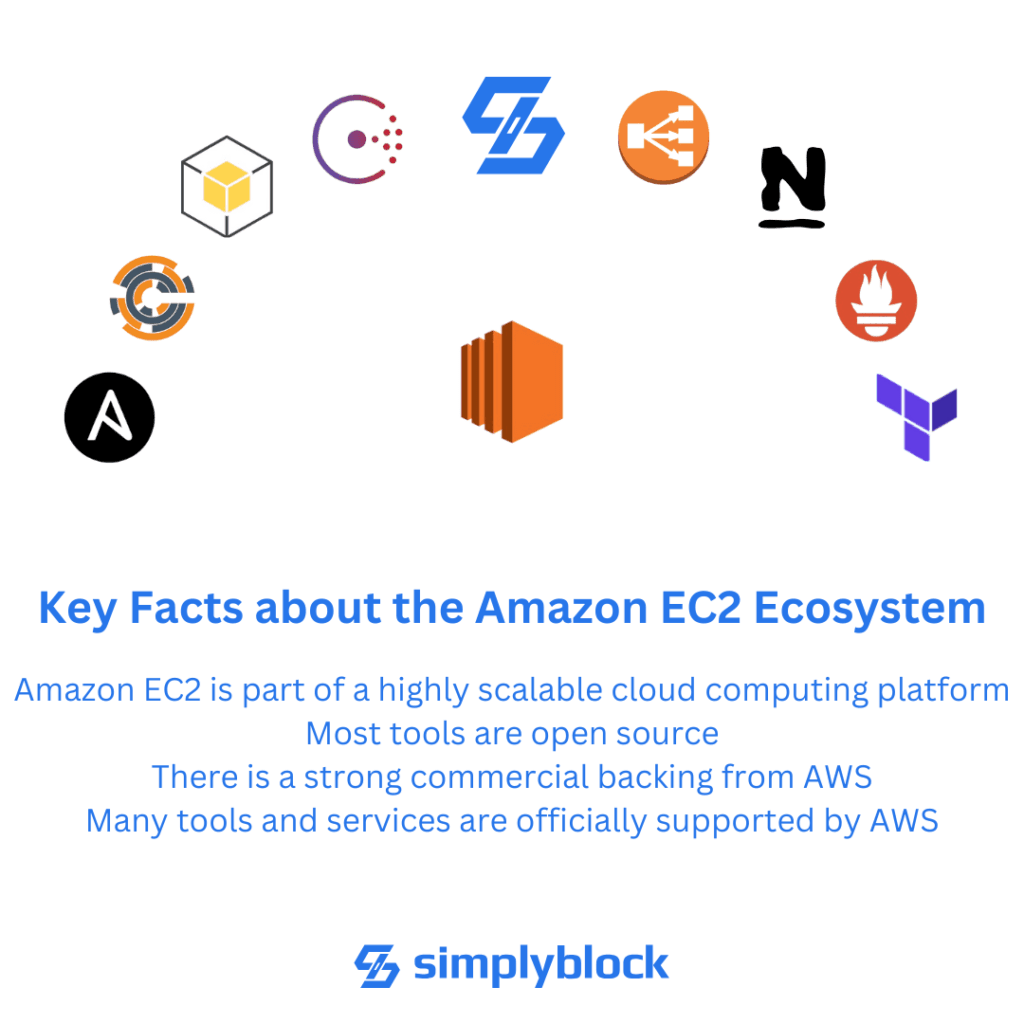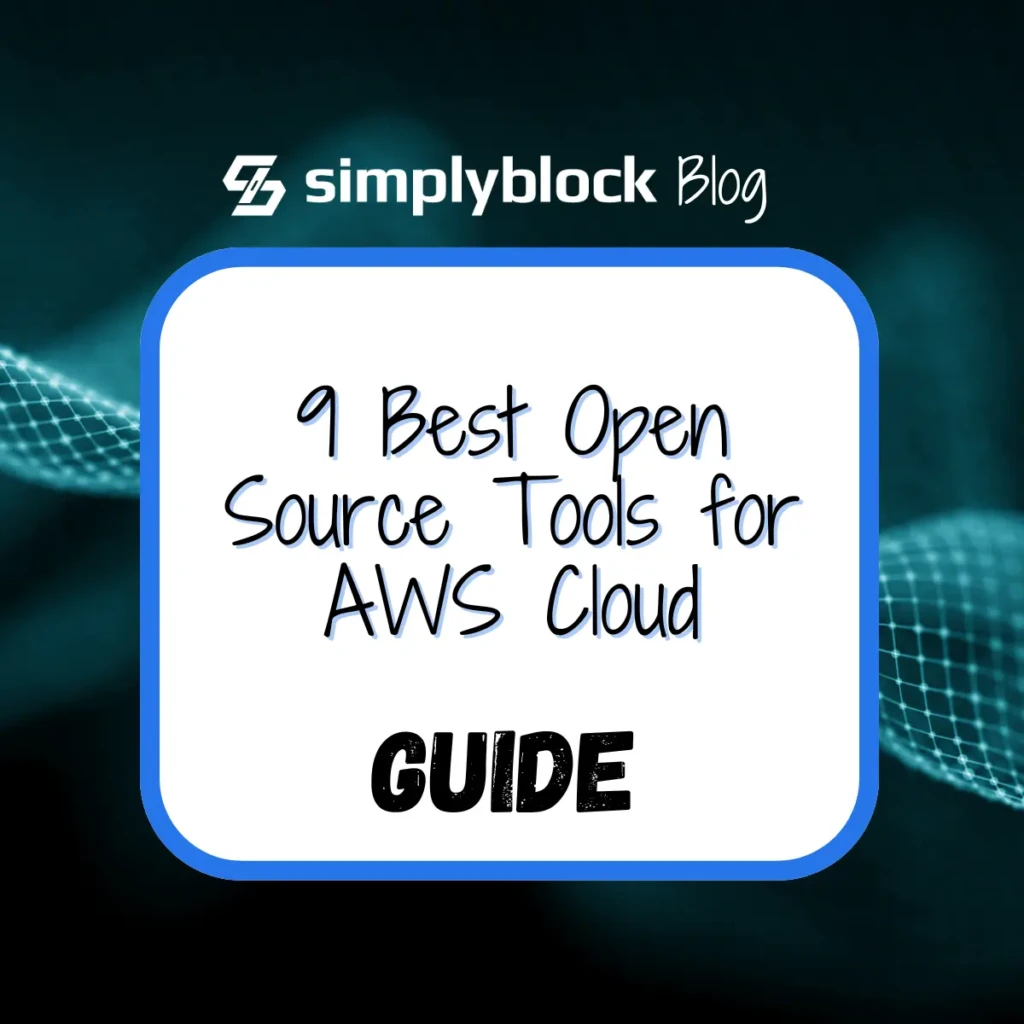
What is Amazon EC2?
Amazon Elastic Compute Cloud (EC2) is one of the most popular services offered by AWS, providing resizable compute capacity in the cloud. It enables businesses to scale and manage their applications efficiently. While EC2 is powerful on its own, several open-source tools can help optimize and manage your EC2 instances more effectively. These tools allow you to streamline operations, automate routine tasks, and improve security.
What are the best open-source tools for your Amazon EC2 setup?
In this post, we will explore nine must-know open-source tools that can help you maximize the potential of your Amazon EC2 instances.
1. Ansible
Ansible is a powerful configuration management tool that automates the deployment and management of applications across EC2 instances. With its simple, agentless architecture, Ansible allows you to automate tasks like software installation, updates, and patching. It also offers AWS modules to interact directly with EC2 resources, making it a great fit for infrastructure automation.
2. Terraform
Terraform is an infrastructure-as-code tool that allows you to define and manage EC2 resources through declarative configuration files. With Terraform, you can automate the provisioning, scaling, and destruction of EC2 instances in a repeatable manner. It integrates seamlessly with AWS, offering extensive support for EC2 and other services, making it a go-to tool for managing cloud infrastructure.
3. Packer
Packer is an open-source tool for automating the creation of machine images, including Amazon Machine Images (AMIs) used in EC2. It allows you to create identical images for multiple platforms, ensuring consistency across your environments. Packer speeds up the provisioning process by enabling you to deploy pre-configured AMIs, reducing the time it takes to launch new instances.
4. Prometheus
Prometheus is a leading monitoring and alerting tool used to collect metrics from EC2 instances and other AWS resources. It helps you track CPU usage, memory consumption, disk I/O, and other critical performance metrics. Prometheus integrates well with EC2, allowing you to monitor the health and performance of your infrastructure in real time.
5. Nagios
Nagios is a popular open-source monitoring tool that keeps an eye on the health of EC2 instances and other infrastructure components. It provides real-time alerts and notifications, helping you detect and address issues such as server downtime, high resource usage, and network failures. Nagios’ modular architecture allows for easy customization and integration with EC2.
6. Chef
Chef is another configuration management tool that automates the process of managing and configuring EC2 instances. Using a code-based approach, Chef allows you to define your infrastructure as code, ensuring consistency across all your instances. Chef integrates directly with EC2, enabling you to deploy and manage applications at scale while maintaining configuration control.
7. Elastic Load Balancer (ELB) Controller
The ELB Controller is an open-source tool that integrates with AWS Elastic Load Balancers to automatically manage traffic routing for your EC2 instances. It provides advanced traffic distribution, failover management, and scaling capabilities, ensuring that your EC2 instances are balanced and perform optimally under varying loads.
8. Boto3
Boto3 is the official Python SDK for AWS and allows you to automate EC2 instance management via scripts. With Boto3, you can write Python scripts to start, stop, scale, and configure EC2 instances programmatically. Boto3 is a powerful tool for developers who prefer Python for automating cloud operations and integrating EC2 with other AWS services.
9. Consul
Consul is an open-source service mesh solution that helps manage microservices and EC2 instances. It provides service discovery, configuration, and segmentation features, ensuring seamless communication between services running on EC2. Consul’s ability to automate service health checks and dynamically update routing information makes it an essential tool for managing large-scale applications.

Why Choose simplyblock for Amazon EC2?
While EC2 provides flexible compute resources, organizations need reliable ways to protect their instances and data from disasters and ransomware. This is where SimplyBlock’s specialized approach creates unique value:
- Instance Protection: Simplyblock ensures business continuity for EC2 workloads by implementing robust backup and recovery mechanisms. Unlike traditional snapshot-based approaches, simplyblock provides immutable backups of your EC2 instances and their data, ensuring that even if ransomware compromises your instances, you can quickly recover to a clean state. The system automatically manages backup policies while optimizing storage usage across your protected instances.
- Zero-Downtime Recovery: Simplyblock leverages EC2’s flexibility for rapid disaster recovery. In the event of an instance compromise or failure, the platform enables quick restoration across availability zones or regions. By understanding EC2’s architecture and instance capabilities, simplyblock ensures minimal disruption to your workloads during recovery operations, maintaining business continuity even during critical incidents.
- Cost-Efficient Instance Protection: Simplyblock optimizes protection costs by implementing intelligent backup strategies for EC2 instances. Instead of maintaining expensive redundant instances or managing complex snapshot chains, simplyblock provides efficient, immutable backups that ensure both data protection and cost optimization. The platform automatically manages recovery points while minimizing storage overhead and instance costs.
How to Optimize Amazon EC2 with Open-source Tools
This guide explored nine essential open-source tools for Amazon EC2, from Ansible’s configuration management to Consul’s service mesh capabilities. While these tools excel at different aspects – Terraform for infrastructure as code, Packer for image management, and Prometheus for monitoring – proper implementation is crucial. Tools like Boto3 enable programmatic control, while Chef and Nagios provide configuration and monitoring capabilities. Each tool offers unique approaches to managing and optimizing EC2 resources.
Beyond open-source solutions, businesses can also explore third-party tools available in AWS Marketplace to further reduce AWS cloud costs and enhance EC2 resource efficiency.
If you’re looking to further streamline your Amazon EC2 operations, Simplyblock offers comprehensive solutions that integrate seamlessly with these tools, helping you get the most out of your Amazon EC2 environment.
Ready to optimize your Amazon EC2 environment? Contact simplyblock today to learn how we can help you enhance performance, streamline operations, and reduce costs across your AWS infrastructure.
Questions and Answers
Popular open-source tools for EC2 management include Terraform, Ansible, Packer, Prometheus, and CloudQuery. These tools automate provisioning, monitoring, and configuration of EC2 instances. To optimize performance further, check out simplyblock for AWS and how it enhances EC2 storage.
Yes, tools like CloudQuery and custom Terraform modules can optimize EC2 storage use. Combine them with Amazon EBS volume consolidation strategies for cost savings. Simplyblock also helps reduce storage waste through smarter provisioning.
Terraform allows you to define EC2 infrastructure as code, making deployments reproducible and scalable. It integrates seamlessly with AWS APIs and pairs well with Kubernetes on EC2 for dynamic environments.
Prometheus and Grafana are leading tools for EC2 monitoring. They provide metrics, alerts, and visual dashboards. For storage-heavy workloads, monitor IOPS and throughput closely—see our performance metric guide for more.
Definitely, tools like Restic or Velero (for Kubernetes workloads) offer reliable, scriptable backups. For full disaster recovery workflows, consider combining these with simplyblock’s storage snapshots to minimize RPO and RTO in EC2 environments.



